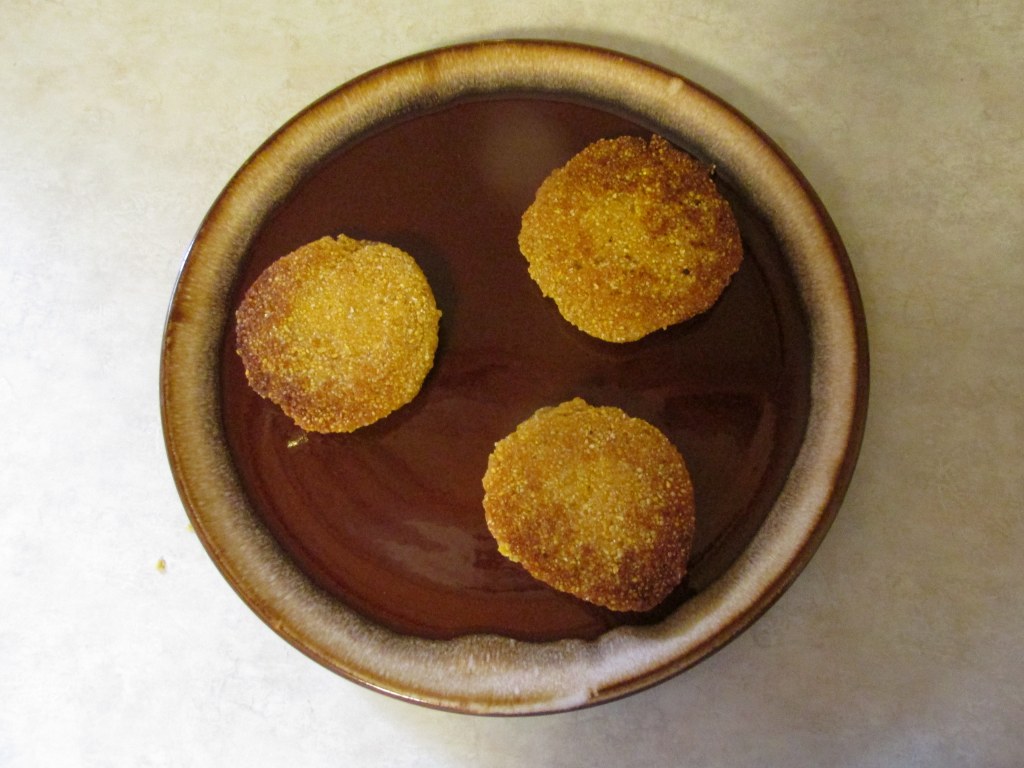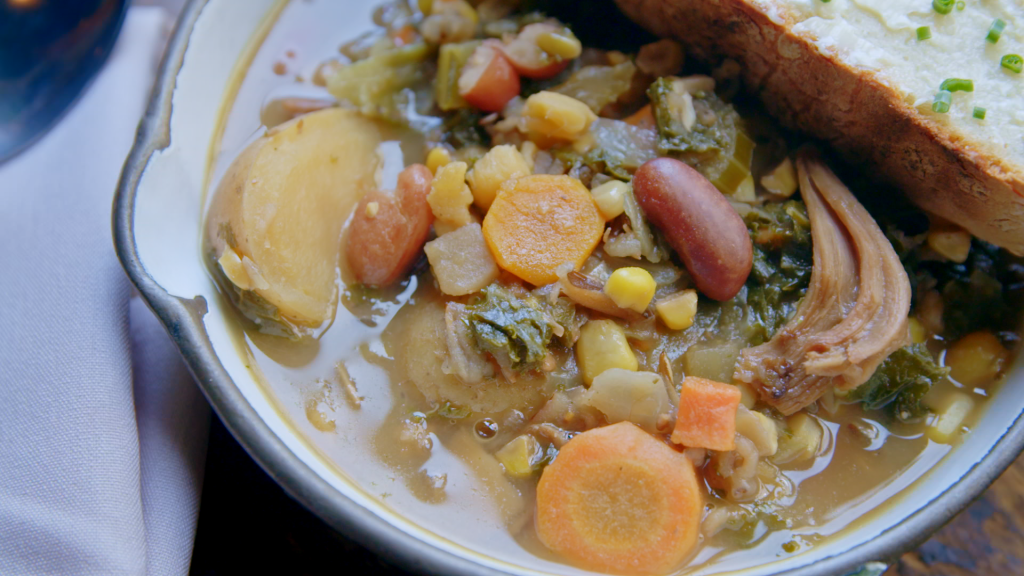Discover The Exquisite Sagamite Recipe: Unleash Your Culinary Skills With This Irresistible Guide!
Sagamite Recipe: A Traditional Indigenous Dish with a Modern Twist
Introduction
Welcome, Culinary Enthusiasts! Today, we will embark on a culinary journey to explore the delightful world of Sagamite, a traditional indigenous dish with a modern twist. This hearty and nutritious meal has been enjoyed by the indigenous people of North America for centuries, and now it’s time for you to discover its unique flavors and cooking techniques. Join us as we delve into the history, ingredients, instructions, and serving suggestions of this mouthwatering dish.
3 Picture Gallery: Discover The Exquisite Sagamite Recipe: Unleash Your Culinary Skills With This Irresistible Guide!



What is Sagamite?
Sagamite is a traditional indigenous dish that has been passed down through generations. It is a thick and hearty porridge-like stew made from cornmeal, beans, and various vegetables. The name Sagamite comes from the Algonquin language and translates to corn soup. This dish was a staple food for many indigenous tribes, providing them with essential nutrients and sustenance.
Who Enjoyed Sagamite?

Image Source: wordpress.com
Sagamite was a beloved dish among the indigenous tribes of North America, including the Algonquin, Iroquois, and Huron-Wendat. It was a versatile and adaptable recipe that could be tailored to suit the available ingredients and preferences of each tribe. Sagamite was not only a source of nourishment but also a cultural symbol, representing the connection between the land, people, and traditions.
When Was Sagamite Served?
Sagamite was traditionally served during feasts, celebrations, and gatherings within indigenous communities. It was a dish that brought people together, fostering a sense of unity and camaraderie. The preparation and consumption of Sagamite were often accompanied by songs, dances, and storytelling, creating a vibrant and joyful atmosphere.
Where Did Sagamite Originate?

Image Source: wordpress.com
Sagamite originated in the indigenous tribes of North America, particularly in the northeastern regions of the continent. The Algonquin, Iroquois, and Huron-Wendat tribes, among others, cultivated corn, beans, and vegetables, which formed the basis of this traditional dish. Today, Sagamite continues to be enjoyed by indigenous communities while also gaining popularity in modern cuisine.
Why Should You Try Sagamite?
Sagamite is not just a delicious and filling dish; it is also an opportunity to connect with indigenous culture and honor the traditions of the past. By preparing and savoring Sagamite, you can gain a deeper appreciation for the rich culinary heritage of North America and support the preservation of indigenous foodways. Additionally, Sagamite offers a nutritious and wholesome meal that can be enjoyed by people of all backgrounds.
Ingredients

Image Source: amazonaws.com
To prepare Sagamite, you will need the following ingredients:
1. Cornmeal
Start by gathering a cup of cornmeal, preferably stone-ground for a more authentic flavor and texture.
2. Beans
Add half a cup of pre-cooked and drained beans of your choice. Traditionally, indigenous tribes used kidney beans or black beans.
3. Vegetables
Include a selection of diced vegetables, such as onions, carrots, celery, and bell peppers, to enhance the flavors and add nutritional value to the dish.
Instructions
Follow these steps to create a delicious Sagamite:
1. Boiling Water
In a large pot, bring water to a boil. The amount of water will depend on how thick you want your Sagamite to be.
2. Adding Cornmeal
Gradually sprinkle the cornmeal into the boiling water, stirring continuously to avoid lumps. Lower the heat to medium and cook for about 20 minutes, stirring occasionally.
3. Incorporating Beans and Vegetables
Add the pre-cooked beans and diced vegetables to the pot. Continue cooking for an additional 10 minutes until the vegetables are tender.
Serving Suggestions
Here are some serving suggestions to elevate your Sagamite experience:
1. Garnish with Fresh Herbs
Sprinkle finely chopped fresh herbs, such as cilantro or parsley, on top of the Sagamite to add a burst of freshness and color.
2. Serve with Traditional Bannock
Pair your Sagamite with a side of warm bannock, a traditional indigenous bread made from flour, baking powder, and water. It complements the flavors and textures of Sagamite perfectly.
3. Explore Toppings
Get creative with toppings by adding shredded cheese, crispy bacon bits, or a dollop of sour cream. These additions can enhance the taste and presentation of your Sagamite.
Techniques and Tips
Here are some techniques and tips to help you master the art of Sagamite:
1. Consistency Control
Adjust the amount of cornmeal and water to achieve your desired consistency. If you prefer a thicker Sagamite, add more cornmeal; for a thinner version, add more water.
2. Seasoning Sensation
Experiment with different herbs, spices, and seasonings to customize the flavor profile of your Sagamite. Traditional options include salt, pepper, and garlic powder.
3. Leftover Makeover
Transform leftover Sagamite into flavorful patties by shaping them into rounds and pan-frying until golden brown. Serve as a side dish or enjoy them as a satisfying snack.
FAQs
1. Can I use different types of cornmeal for Sagamite?
Yes, you can use different types of cornmeal, such as yellow or blue cornmeal, to add visual appeal and subtle variations in flavor.
2. Can I make Sagamite vegan-friendly?
Absolutely! Simply omit any animal-based ingredients and replace them with plant-based alternatives, such as vegetable broth or plant-based protein sources.
3. How long can I store leftover Sagamite?
Leftover Sagamite can be stored in an airtight container in the refrigerator for up to three days. Reheat it on the stovetop or in the microwave before serving.
4. Can I freeze Sagamite?
Yes, you can freeze Sagamite for future use. Allow it to cool completely, transfer it to freezer-safe containers, and store it for up to three months. Thaw and reheat as needed.
5. Can Sagamite be made in advance?
Absolutely! In fact, Sagamite often tastes even better the next day as the flavors have had time to meld together. Simply refrigerate the prepared Sagamite and reheat before serving.
Conclusion
Congratulations, Culinary Enthusiasts! You have embarked on a flavorful adventure and learned all about Sagamite, a traditional indigenous dish with a modern twist. By exploring the history, ingredients, instructions, serving suggestions, techniques, and tips, you have gained a deeper appreciation for the cultural significance and culinary excellence of this remarkable dish. Now, it’s time to embrace your inner chef, gather the ingredients, and create your own delicious Sagamite. Let the aromas fill your kitchen and the flavors transport you to a world of tradition and innovation.
Remember, through the act of cooking and savoring Sagamite, we honor the indigenous communities and their contributions to our shared culinary heritage. So go ahead, share this recipe with family and friends, and celebrate the diversity and richness of North American cuisine. Happy cooking, and may your Sagamite creations be a testament to the power of food as a bridge between cultures and generations.
Final Remarks
The information provided in this article is for educational and entertainment purposes only. While we have taken great care to ensure the accuracy and completeness of the content, we make no guarantees or warranties about the suitability of the Sagamite recipe for individual dietary needs or restrictions. Please consult a qualified healthcare professional or nutritionist for specific advice and guidance regarding your dietary choices.
This post topic: Recipe



